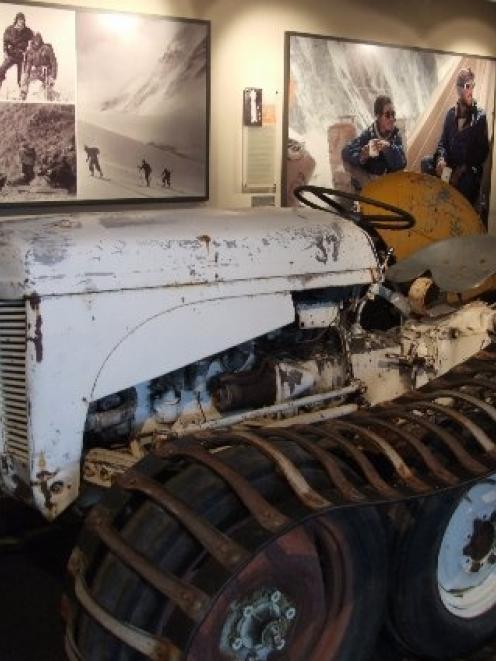

Denis Callesen has an enduring memory of Sir Edmund Hillary the day after the famous climber unveiled a bronze statue of himself at the Hermitage Hotel.
Sir Edmund had initially given permission for the statue but in typical unassuming fashion later withdrew it, saying he thought it should have been done of Harry Ayres.
Mr Callesen, the general manager of the hotel, then had to renegotiate with the great climber and he finally agreed. The statue was unveiled in 2003, in appalling weather conditions.
Early the next morning, Mr Callesen spotted Sir Edmund heading outside. He left him undisturbed but watched him walk around the statue seven or eight times.
No autograph hunters accosted him to sign their $5 notes and he could see Sir Edmund looking at the statue and reflecting.
When he came back inside the hotel, he told Mr Callesen he loved the statue. ‘‘That meant so much to me,'' Mr Callesen said.
Five years after the statue's unveiling comes the official opening of the $7.5 million Sir Edmund Hillary Alpine Centre.
The date of May 29 was ‘‘irresistible'', given it was the 55th anniversary of the first Everest ascent and the 50th anniversary of the official opening of the hotel - the third Hermitage, the first one built in 1884.
While the Hillary family had seen photographs of the centre during construction, none had yet visited and it was ‘‘fantastic'' Lady Hillary had agreed to open it.
Mr Callesen visited Sir Edmund and his wife at their Auckland home in June last year and they discussed how it was unlikely he would get to the official opening.
The centre opened less than three weeks before Sir Edmund died and it was fascinating how it was treated almost like a shrine that first day, he said.
There had been numerous chats with Sir Edmund about the centre and he had been delighted to have the building named after him.
It had been only logical to attach his name to it given his involvement with Aoraki Mt Cook.
While New Zealanders all knew Sir Edmund had climbed Everest, many were not aware he trained at Aoraki Mt Cook for both his Everest and Antarctic expeditions. Local and international visitors, alike, were moved to learn this was the place he had prepared for his historic treks.
‘‘Really, they come to where it all began,'' Mr Callesen said.
The centre, next to the hotel, outlines the area's history through the themes of transport, climbing and the Hermitage Hotel.
The Hillary Gallery is dedicated to the life and achievements of Sir Edmund and particularly his affiliation with Aoraki Mt Cook.
For Mr Callesen, a giant photograph on the wall of the gallery of Sir Edmund and Tenzing Norgay having a cup of tea, was the ‘‘iconic'' shot which summed up the great climber.
The world's first skiplane with retractable skis is suspended from roof of the centre. The Auster ZK BDX made aviation history on September 22, 1955, when Sir Harry Wigley made the first snow landing on the Tasman Glacier.
The centre was also ‘‘very lucky'' to have one of the first two motor vehicles that reached the Hermitage in 1906 - a 1902 De Dion Bouton.
Rodolph Wigley and John Rutherford arrived at 4am on February 8, 1906, with tales of roping their cars out of creeks and sustaining a puncture along the coach track from Pukaki to the hotel.
Later that year, Mr Wigley established a regular motor service from Fairlie.
The De Dion Bouton is on display alongside a 1908 Darracq, a modified eight-seater vehicle commissioned as one of the first service cars to transport climbers and tourists from Timaru to Aoraki Mt Cook.
Having the ice axe, gloves and down bodysuit from Mark Ingles' successful ascent of Everest in 2006 on display was very special, Mr Callesen said.
Mr Ingles was the first double amputee to reach the summit.
The centre also has the only theatre in the world with 2-D, 3-D and a planetarium dome within the same space.
Three books of condolences have been filled at the centre since Sir Edmund's death on January 11. Two have already been sent to Lady Hillary and the third will be given to her when she visits next month.
The comments in those books showed how well known Sir Edmund was all over the world, Mr Callesen said.
